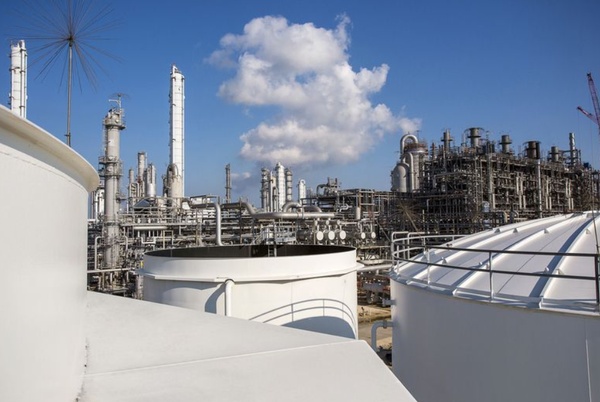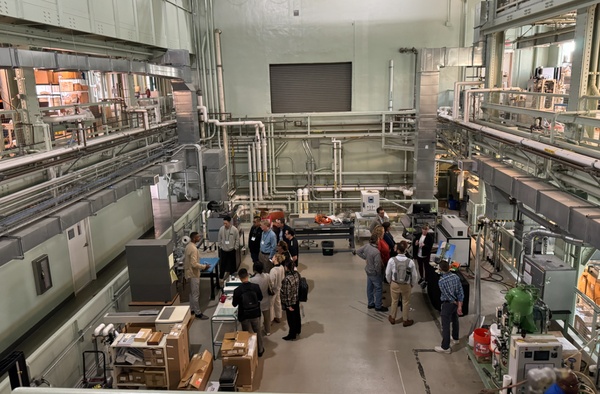The European Car Market Slows Down! Triggering a Domino Effect in the Petrochemical Industry Chain
According to ABS, synthetic rubber, and R-HDPE suppliers, the slowdown in the European automotive industry has dampened the sentiment in the petrochemicals market.
I. The Impact of the Slowdown in the European Automotive Industry on the Petrochemical Products Market
According to a report released by S&P Global Mobility in March, car sales in Western and Central Europe are expected to decline by 0.7% year-on-year in 2025, dropping to approximately 15 million units.
S&P Global Mobility also stated that automobile production will be affected by the weak market, with car production expected to decline from around 17.2 million units in 2024 to approximately 16.7 million units in 2025, before slightly rebounding to around 17.0 million units in 2026.

Mercedes-Benz Group stated in a press conference on February 20 regarding the financial report: "Trade conflicts, particularly additional tariffs and sanctions, could significantly disrupt global trade flows and business activities. Sharp increases in energy and raw material prices, higher-than-expected inflation rates and interest rates, potential distortions in financial markets, and a noticeable weakening of economic activity may also impact the development of the global economy and the automotive market." The reduction in demand and the increase in uncertainty are affecting the petrochemical market in the region.
II. Rubber Market Situation
The European rubber market is a key commodity used in tire production, and market participants say that consumers are hesitant to purchase materials. According to a report by the American Chemistry Council in May 2024, light vehicles contained an average of 231 pounds of synthetic rubber and elastomers in 2023.
Therefore, butadiene rubber producers choose to produce only enough polybutadiene rubber (PBR) to meet their contractual output, without the need for additional spot materials.
"If no one is buying spot PBR and no one is willing to hold excess inventory, then producing spot PBR makes no sense," said a rubber trader.
The automotive industry's lack of purchasing activity has led some rubber companies to diversify their portfolios by entering the construction or consumer goods markets. Despite low demand, the cash市场价格自年初以来一直在上涨。3月21日,Platts评估的SBR 1500-1502品位FD NWE价格为1960欧元/吨,较1月10日上涨160欧元/吨。 corrected and translated: The automotive industry's lack of purchasing activity has led some rubber companies to diversify their portfolios by entering the construction or consumer goods markets. Despite low demand, the cash丁苯橡胶 (SBR) market prices have been rising since the beginning of the year due to increases in raw material costs. On March 21, Platts assessed the FD NWE price for SBR 1500-1502 grade at €1,960/ton, up €160/ton from January 10.
III. ABS Market Situation
According to data from the American Chemistry Council (ACC), the automotive market is a key sector for ABS, with this polymer accounting for 24 pounds per vehicle. There is also little interest in purchasing ABS and recycled ABS for automotive applications. "Theoretical demand for recycled ABS in automotive applications is high, but no one is buying it," said an ABS producer. "The automotive market is very weak."

An ABS distributor stated that they expect the automotive market to recover no earlier than the fourth quarter of 2025. This has prompted ABS manufacturers and distributors to shift their focus to so-called white goods, such as refrigerators, dishwashers, or washing machines, which reportedly have stronger demand. Several manufacturers have indicated that the production of white goods at the beginning of the year has increased the demand for both virgin and recycled ABS, driving up prices.
According to Platts data, the assessed price for bulk ABS was 1,800 euros per ton FD NWE on January 15, an increase of 80 euros per ton from January 8, and the price remained at this level until March 19.
IV. Market Conditions of R-HDPE
The slowdown in the automotive industry has also impacted the European recycled high-density polyethylene (R-HDPE) market. Although automakers had previously considered using R-HDPE materials to produce car door handles, recyclers and distributors have reported that automotive demand in the market has been weak throughout the first quarter of 2025. This has led to an oversupply of R-HDPE materials, and prices have been declining since the beginning of the year.

On March 25, Platts estimated the price of recycled HDPE natural pellet at €1630 FD NWE, down €180 per ton from January 2. On March 25, the price of recycled HDPE light pellet was estimated at €1140 FD NWE, down €50 per ton from January 2.
A distributor stated that the lack of demand in the gardening and construction industries has exacerbated the weakness in the R-HDPE market.
Editor: Carrie
【Copyright and Disclaimer】This article is the property of PlastMatch. For business cooperation, media interviews, article reprints, or suggestions, please call the PlastMatch customer service hotline at +86-18030158354 or via email at service@zhuansushijie.com. The information and data provided by PlastMatch are for reference only and do not constitute direct advice for client decision-making. Any decisions made by clients based on such information and data, and all resulting direct or indirect losses and legal consequences, shall be borne by the clients themselves and are unrelated to PlastMatch. Unauthorized reprinting is strictly prohibited.
Most Popular
-

List Released! Mexico Announces 50% Tariff On 1,371 China Product Categories
-

Nissan Cuts Production of New Leaf EV in Half Due to Battery Shortage
-

New Breakthrough in Domestic Adiponitrile! Observing the Rise of China's Nylon Industry Chain from Tianchen Qixiang's Production
-

Dow, Wanhua, Huntsman Intensively Raise Prices! Who Controls the Global MDI Prices?
-

Mexico officially imposes tariffs on 1,400 chinese products, with rates up to 50%






